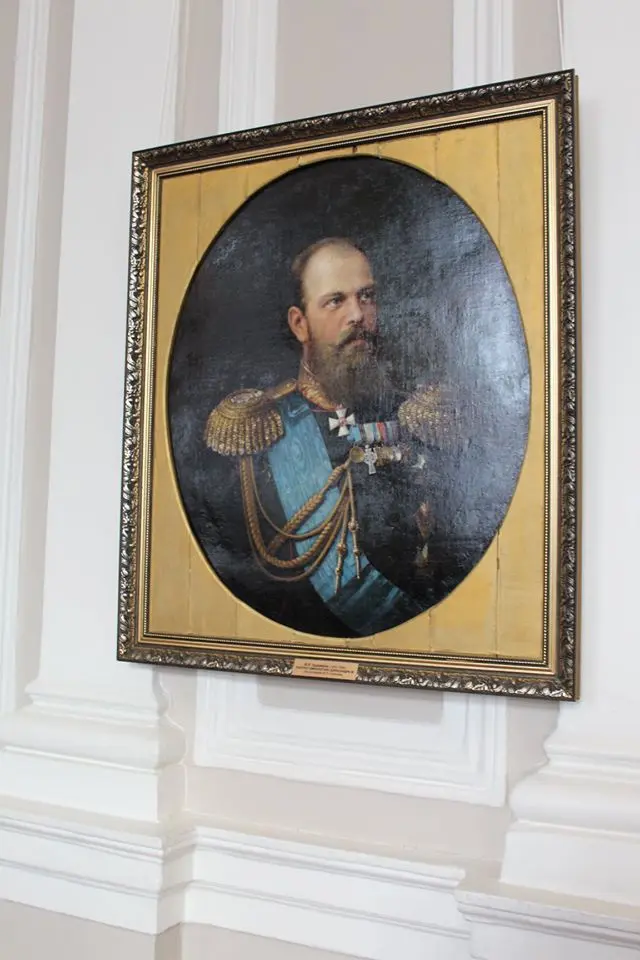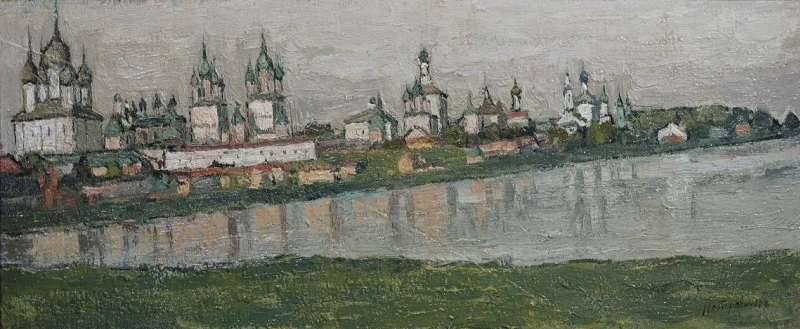He studied at the Oryol gymnasium, but without completing her course, enrolled as a student of the Academy of arts, where his professors were T. A. Neff and A. G. Markov. In 1861 he received a small gold medal for the painting "Greetings to the young".
Being sent at public expense abroad, meat-eaters worked in Paris, Florence, Rome and Spain. Upon returning to Russia he received in 1870 the title of academician for the painting "the Spell". One of the organizers and active members of the Association of traveling art exhibitions. Actively participated in all exhibitions of the Association and is constantly concerned about his independence and vitality.
G. G. Myasoedov was the son of the landed gentry. The father encouraged his precocious interest in art. After teaching at the gymnasium in Orel, where drawing was taught by a professional artist I. A. Volkov, the young man went to St. Petersburg in 1853, he enrolled at the Academy. The decade that meat-eaters spent in the Academy (1853-63), coincided with a period of severe crisis of the institution, which ended the "revolt of fourteen". However, the "rebellion" meat eaters not caught - by this time he already finished OH and as a pensioner was abroad (1863-68), visited Berlin, Brussels, Paris, Italy and Spain.
In the years of training Myasoedov wrote a genre picture "Congratulations young, in the landlord's house" (1861) the painting on a historical theme "Escape Gregory Otrepiev from a tavern on the Lithuanian border" (1862), which Stasov called one of the first applications on the way to creating a realistic historical paintings. In the future, historical themes will be developed in painting Myasoedova constantly parallel with the paintings of genre. These two lines of the artist's work approached very closely, sometimes passing each other.
Creative work all the time combined with painter active in social activities. It was he who initiated the creation of the organization of artists of a new type - the Association of traveling art exhibitions. The idea of this organization originated from Myasoedova in 1867, when he was abroad and had the opportunity to observe the activities of the European artists in the organization of traveling exhibitions, held mainly with a commercial purpose. 16 Dec 1870 took place the first General meeting of the members of the society, where it elected a Board of Directors, composed and meat eaters (along with I. N. Kramskoy, N. N. GE, V. G. Pervym, M. K. Klodt). A November 29, 1871 in St. Petersburg, I opened a traveling art exhibition, shown then in Moscow, Kiev and Kharkov. Myasoedov presented at this exhibition the painting "grandfather of the Russian Navy. (Boat of Peter)" (1871), in which the solution of the historical threads of this in everyday terms.
In March 1872 II opened a traveling exhibition, which exhibited the most significant painting Myasoedova - "Zemstvo dines" (1872). A quiet provincial town. Sunny afternoon. At the entrance to the County Council a group of peasants. One of them, perched on the stone slabs and put it under his head sack, sleeps. Other leisurely eat bread with salt, but the onions - that's their dinner. And there, in the house, but dined gentlemen through the open window could see the footman, carefully wash up the dishes immediately - the number of bottles and decanters. There is a critical story - a comparison of the Zemstvo gentlemen and Zemstvo farmers, the contrast of wealth and poverty. But it was not for the artist in the main picture. He concentrated all his attention on the peasants themselves. In them the artist saw and captured raznoobrazie characters, special decorum, inner discipline, a unique beauty.
In another fundamental painting Myasoedova - "Reading the Manifesto of 19 February 1861" (1873) - reveals a different aspect of the same theme - the fate of the peasantry, deceived in their expectations. "I wrote one of the critics - I've never been able to see (after the "boatmen" in Repina) on any pattern so typical, betuscasino true, not exactly alive, a true peasant of persons". Farmers with rapt attention listen to a boy to read the text of the emancipation from serfdom. Their attitude to the document is still undecided: on the faces, no joy, no apparent frustration. But there is an inner tension, distrust, wariness. The peasants in his wise and courageous.
The study of the life of the Russian peasantry] leads to the plot, which tells about ancient beliefs and customs, their role in the lives of the people. So, in the film "Opahivanie" (1876) shows the ancient ritual detstvo: farmers popahivayut the village from evil spirits, Praga to the plow of naked girls. In 1878-80. meat eaters is working on two versions of "Drought", where the prayer service in the field. In parallel, there are searches in the field of historical subjects: the artist paints a picture "Cameristele" (1882-84), the plot of which stands in very close connection with the preceding genre paintings.
By the early 1880s in the works] is planned a new phase. In the landscape "Road in the rye" (1881) struck by the simplicity and expressiveness of motive: receding to the horizon the figure of a lone wanderer among the vast field of rye. The artist opens the possibility of a more generalized, monumental decisions genre paintings, which fully emerged in "the Mowers" (1887). The author here celebrates the joyful side of life, conveys the beauty of peasant labor, its sepulchral, harmonious, almost musical rhythm. Already the sheer size of the canvas (159х275 cm) indicate significance for the artist the topic picture. However, it is not without certain contradictions. Completely abandoning the critical beginning, the artist refused thereby from the basic principle of the art system in the 1870s has Not mastered the new figurative language and not being prepared to accept the artistic ideas of the new generation of painters, meat-eaters were among those members of the society, who at the turn of the 1880s and 1890s did not want to admit into its ranks the young artists. The last years of his life the artist did not contribute anything significant in his work.
-
Artworks liked by43 users
- Artworks in 3 collections and 61 selections
Publication
Exhibitions
All exhibitions of the artist





















